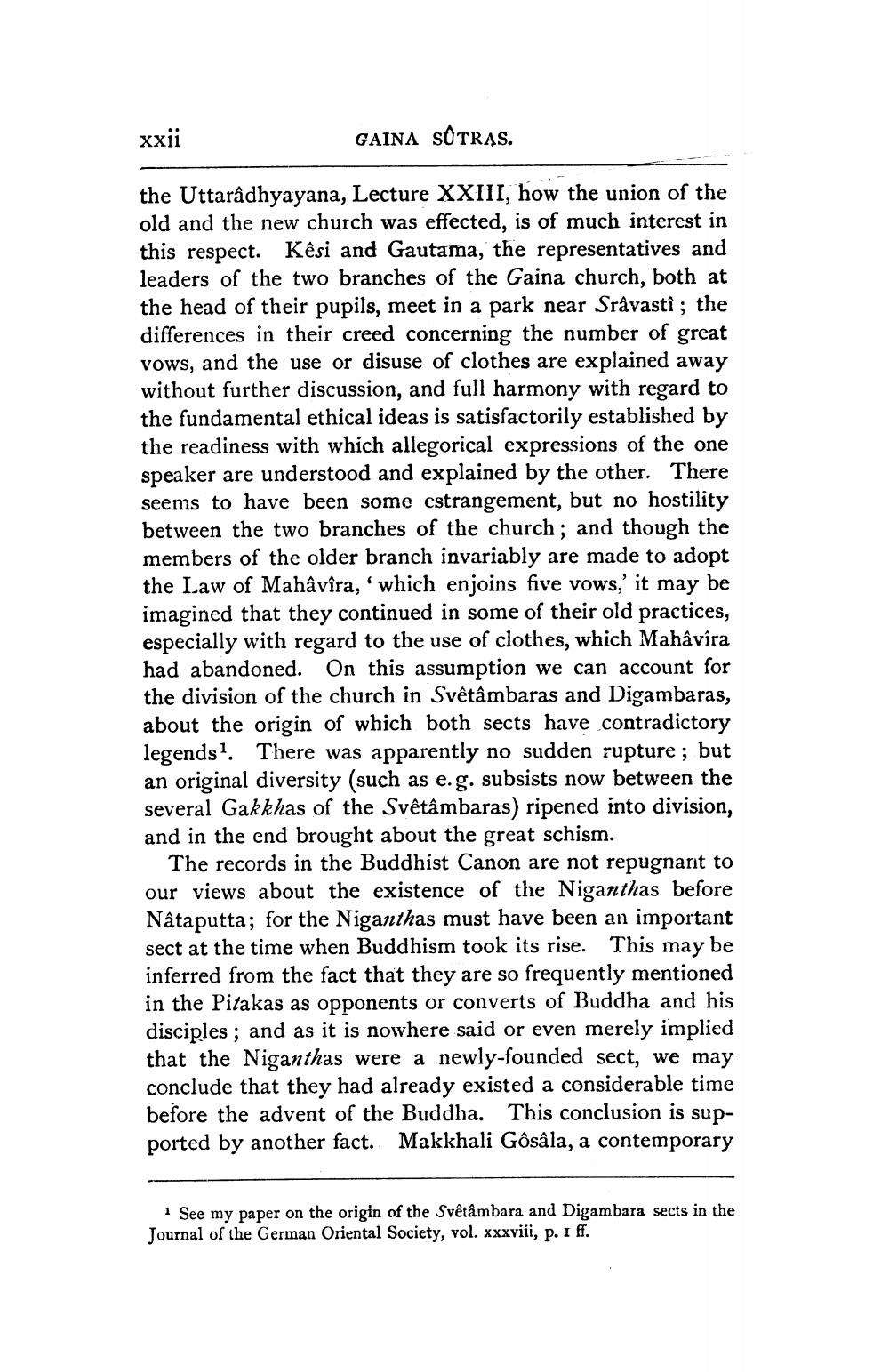________________
xxii
GAINA SÛTRAS.
the Uttarâdhyayana, Lecture XXIII, how the union of the old and the new church was effected, is of much interest in this respect. Kêsi and Gautama, the representatives and leaders of the two branches of the Gaina church, both at the head of their pupils, meet in a park near Srâvastî ; the differences in their creed concerning the number of great vows, and the use or disuse of clothes are explained away without further discussion, and full harmony with regard to the fundamental ethical ideas is satisfactorily established by the readiness with which allegorical expressions of the one speaker are understood and explained by the other. There seems to have been some estrangement, but no hostility between the two branches of the church; and though the members of the older branch invariably are made to adopt the Law of Mahâvîra,' which enjoins five vows,' it may be imagined that they continued in some of their old practices, especially with regard to the use of clothes, which Mahâvîra had abandoned. On this assumption we can account for the division of the church in Svêtâmbaras and Digambaras, about the origin of which both sects have contradictory legends?. There was apparently no sudden rupture; but an original diversity (such as e.g. subsists now between the several Gakkhas of the Svêtâmbaras) ripened into division, and in the end brought about the great schism.
The records in the Buddhist Canon are not repugnant to our views about the existence of the Niganthas before Nâtaputta; for the Niganthas must have been an important sect at the time when Buddhism took its rise. This may be inferred from the fact that they are so frequently mentioned in the Pitakas as opponents or converts of Buddha and his disciples; and as it is nowhere said or even merely implied that the Niganthas were a newly-founded sect, we may conclude that they had already existed a considerable time before the advent of the Buddha. This conclusion is supported by another fact. Makkhali Gôsâla, a contemporary
1 See my paper on the origin of the Svêtâmbara and Digambara sects in the Journal of the German Oriental Society, vol. xxxviii, p. I ff.




